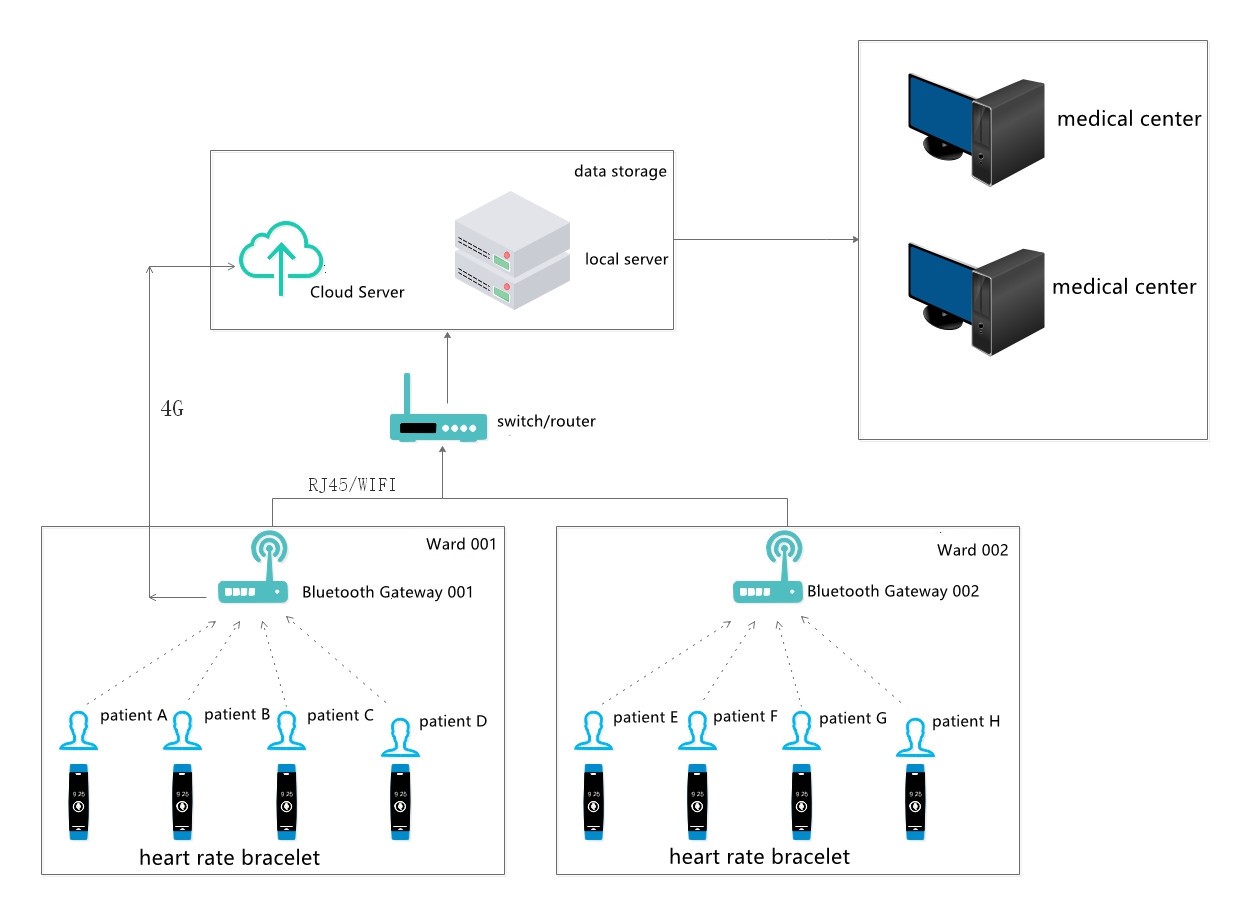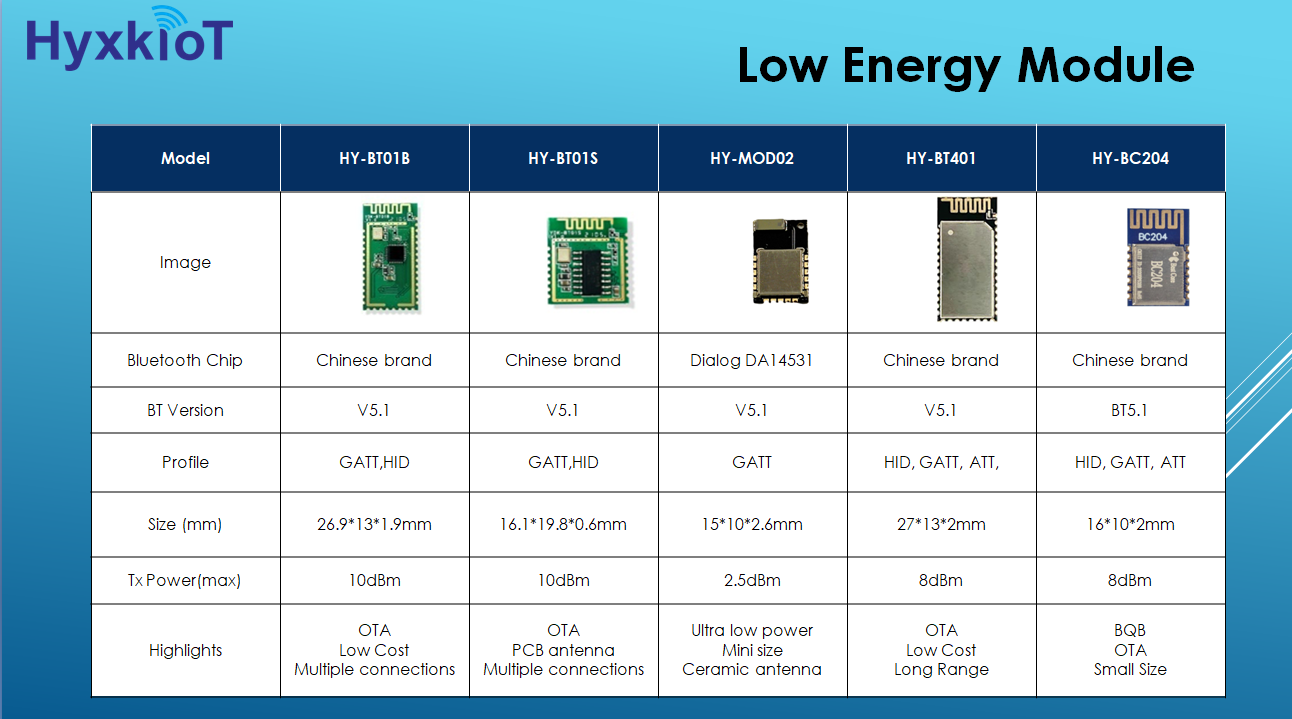Bluetooth Technology in Smart Medical Solution
Bluetooth technology is widely used in the medical field, which can help hospitals realize smart medical system.
How to use Bluetooth technology to realize the interaction between patients and medical staff, medical institutions, and medical equipment has become the key to smart medical care.
Following as the applications of Bluetooth in smart medical:
a. Medical Device Management
In hospitals where iBeacon base stations are deployed, fixed assets installed with Beacon can be located and tracked in real time. When emergency rescue measures are taken, according to the device location information on the background of the system, materials can be deployed in the immediate vicinity, integrated medical resources, and quickly carry out patient care. In addition, hospital managers can set up safe activity areas for corresponding medical equipment. Once the assets are out of the monitoring range, the system can issue an alarm in time to notify managers to prevent loss.
b. Personnel management
In addition to the location management of the device, it is also possible to set up a safe activity area for critically ill patients and children wearing the positioning bracelet, and record their health data to provide data reference for the treatment process. If the ward leaves the safe area, the system will send an alarm signal in time to inform the medical staff to give timely assistance. Not only that, the indoor positioning and navigation system can also monitor the work of medical staff. According to the real-time location of the staff, the system automatically counts the on-duty time and abnormal departure trajectories, which are used as reference indicators for work assessment.
c. Patient Navigation
In terms of medical treatment, patients can use their mobile phones to achieve indoor navigation in the hospital, one-click search for consulting rooms and wards, and three-dimensional maps for cross-floor voice guidance to quickly reach their destinations. This indoor navigation service can reduce the time loss of patients and improve the efficiency of consultation. The hospital management can monitor the flow of people in each time period, and dynamically adjust the medical work according to the number of visits to achieve the optimal allocation of resources.

2. BLE module in medical instruments
The current health and medical instruments include wearable products and other small items, such as thermometers, heart rate monitors, blood glucose and blood pressure monitors, thermometers, electronic scales, etc., which can upload various equipment parameters and various physiological data characteristics of patients to the cloud database, which is convenient for When visiting a doctor, the doctor makes a detailed analysis of various physiological data of the patient.
For small medical devices, they have a common characteristic, which is that they all require battery power and are often small in size. Therefore, a Bluetooth module must be small and use very low power. The Bluetooth low energy module only uses power from the battery when transmitting or receiving data, and sleeps the rest of the time.
Low-power wireless solutions provide an ideal solution for healthcare medical applications:
a. Improve battery life: One button battery has a working life of several years;
b. High integration and small size: the miniaturized package of the integrated microprocessor SOC chip can be used to develop miniature wearable sensors;
c. Mobile phone interconnection: seamless connection with existing built-in low-power Bluetooth mobile phones.
For detail application scenarios: BLE module in the heart rate monitor uses a heart rate sensor to collect heart rate information in real time. The received heart rate data is transmitted to the main control MCU of the Bluetooth module, and the heart rate value is calculated by the MCU. On the one hand, the heart rate value can be displayed on the LED screen through the corresponding interface; Mobile APP is responsible for receiving and analyzing the received heart rate data, so as to realize the real-time monitoring of the heart rate value on the mobile phone. The collection of various physiological data and the aggregation of a large amount of data facilitate the establishment of medical and health big data and provide better guidance for diagnosis and treatment.
HYXKIOT’s small BLE modules such as HY-MOD02(based on Dialog chip DA14531), HY-KTB523(based on Nordic chip Nrf52832), HY-BC204 and HY-BT01S (based on Chinese brand chip, low cost) can be widely used in health and medical equipment.

More details, please check our sales team, or send email to info@hyxkiot.com

